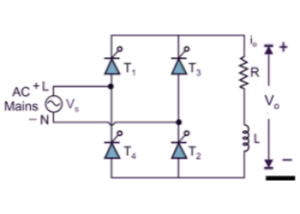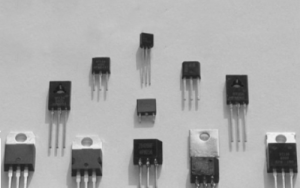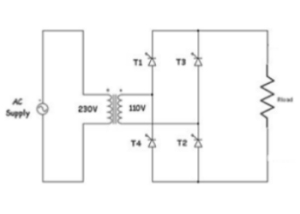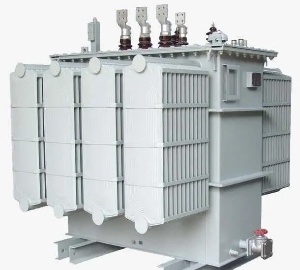Electronic Components Supplier | Transformers, Inductors, Inverters
Thermoelectric Heat Sink, or TEHS, is a passive heat sink based on the thermoelectric effect. It utilizes the thermoelectric effect of semiconductor materials to transfer heat energy from one end to the other, achieving the purpose of heat dissipation.

Characteristics of Thermoelectric Heat Sink
1. Efficient and environmentally friendly: TEHS utilizes the thermoelectric effect for heat dissipation without any external power, making it both efficient and environmentally friendly.
2. Mute: There is no mechanical movement during the operation of TEHS, so it is entirely silent.
3. Strong compatibility: TEHS can adapt to various heat dissipation needs and easily integrate with other electronic devices.
4. Strong Customizability: TEHS can be customized to meet specific needs by changing the properties of semiconductor materials and the shape and size of heat sinks.
Thermoelectric Heat Sink's application areas:
1. Electronic device cooling: TEHS has a wide range of applications in utilize devices, such as laptops, phones, servers, etc.
2. New energy field: In the new energy field, such as solar panels, electric vehicles, etc., TEHS's efficient and environmentally friendly characteristics make it an ideal cooling solution.
3. Aerospace: In the aerospace field, due to its high efficiency, silence, and strong compatibility, TEHS is also widely used for cooling various equipment.

Thermoelectric Heat Sink's strengths and weaknesses:
Advantages:
1. Efficiency: TEHS utilizes the thermoelectric effect for heat dissipation, which is much more efficient than traditional heat sinks.
2. Environmentally friendly and silent: TEHS operates without external power and mechanical movement, making it both environmentally friendly and silent.
3. Strong compatibility: TEHS can adapt to various heat dissipation needs and easily integrate with other electronic devices.
4. Strong Customizability: TEHS can be customized to meet specific needs by changing the properties of semiconductor materials and the shape and size of heat sinks.
Disadvantages:
1. High cost: Currently, the production cost of TEHS is relatively high, which may limit its application in specific fields.
2. High technical difficulty: Manufacturing high-quality and efficient TEHS requires complex technology and production processes.
Efficiency evaluation and influencing factors of Thermoelectric Heat Sink:
The efficiency of the Thermoelectric Heat Sink is a critical factor in measuring its performance. The efficiency of a thermoelectric radiator mainly includes two aspects: thermoelectric conversion efficiency and thermal impedance.
Thermal electric conversion efficiency( η) It is an indicator that measures the ability of thermal energy to be converted into electrical energy. η The higher the value, the stronger the thermoelectric conversion ability and the better the heat dissipation effect. Thermal impedance (R) is an indicator that measures the ability of a thermoelectric radiator to conduct heat energy. The lower the value of R, the stronger the ability to conduct heat energy and the better the heat dissipation effect.
Factors affecting the efficiency of Thermoelectric Heat Sink:
1. Properties of semiconductor materials: The thermoelectric coefficient and conductivity of semiconductor materials significantly impact their performance. The higher the thermoelectric coefficient, the stronger the ability to convert thermal energy into electrical energy; The higher the conductivity, the stronger the conductivity of the current, and the better the effect of thermal energy conduction.
2. Shape and size of heat sink: The shape and size of the heat sink significantly impact the distribution of heat flow and heat dissipation efficiency. A reasonable heat sink design can increase the heat dissipation area and improve the heat dissipation effect.
3. Working environment temperature: Working environment temperature also significantly impacts the performance of TEHS. In high-temperature environments, the thermoelectric conversion efficiency and thermal impedance of TEHS will decrease, so appropriate heat dissipation measures need to be taken to maintain its performance.
4. Manufacturing process: The manufacturing process also significantly impacts the performance of TEHS. Advanced manufacturing processes can improve the performance and stability of TEHS while reducing manufacturing costs.

Supplier
PDDN Photoelectron Technology Co., Ltd. is a high-tech enterprise focusing on the manufacturing, R&D and sales of power semiconductor devices. Since its establishment, the company has been committed to providing high-quality, high-performance semiconductor products to customers worldwide to meet the needs of the evolving power electronics industry.
It accepts payment via Credit Card, T/T, West Union, and Paypal. PDDN will ship the goods to customers overseas through FedEx, DHL, by sea, or by air. If you are looking for high-quality HEATSINKS, please send us inquiries; we will be here to help you.







